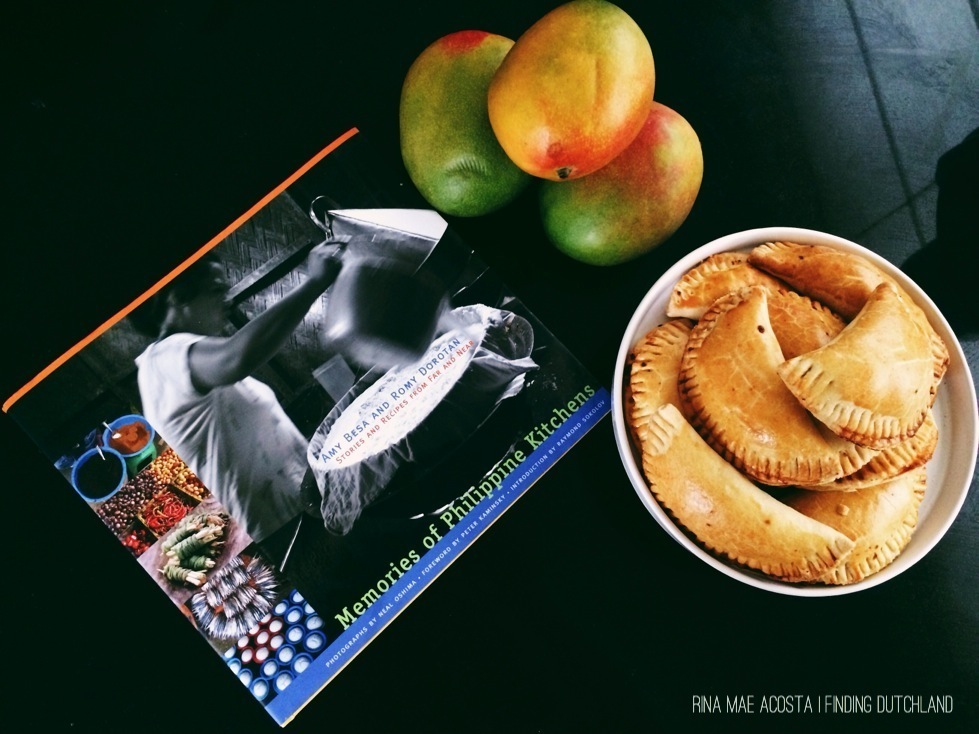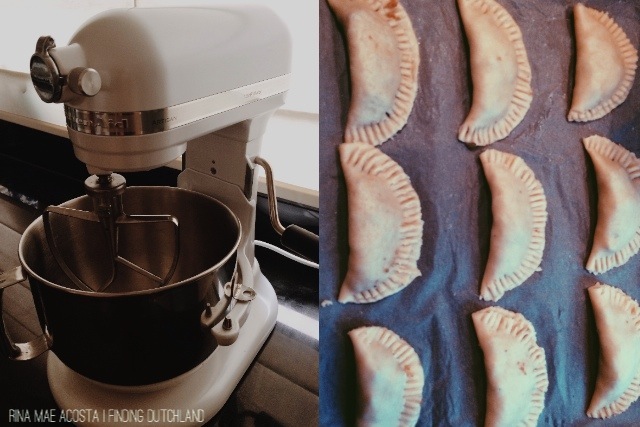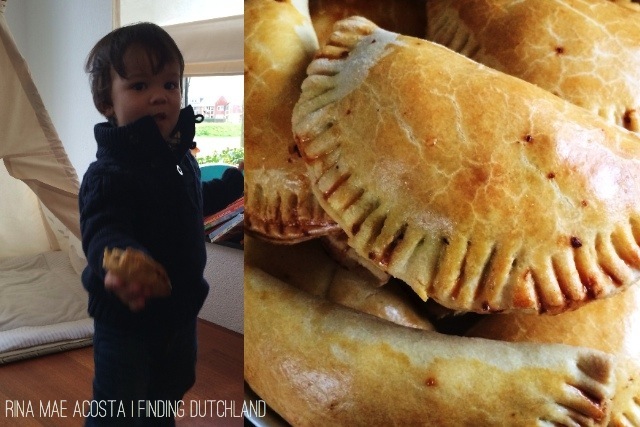 Family archives: My great-grandfather Silverio Acosta -1st row, 2nd on the right- with his siblings and father (middle of first row)
Family archives: My great-grandfather Silverio Acosta -1st row, 2nd on the right- with his siblings and father (middle of first row)
I don’t have any childhood memories of the Philippines.
Most if not all of my recollections are more imagined than real, fleeting snapshots of the only family holiday taken when I was twelve years old. My Filipino family started immigrating to the United States in the 1950s. Due to their resolute belief in the American dream, ambition, tenacity, and persistence, all eight of my great-grandfather’s children, their spouses and their children left the Philippines. My grandparents and parents, among the last to leave, spent more than half of their lives in America (San Francisco). The Philippines that my family left behind forty to sixty years ago is no longer the Philippines of today.
But none of this matters because the ties that bind my family to the Philippines cannot simply be lost by the passage of time. While I identify more with being American than Filipino, I recognize the importance of teaching my son about his Filipino ancestry.
After all, my parenting philosophy revolves around the notion of giving children roots and wings – the perseverance to raise a child such that the child has a strong sense of self and belonging in the world (roots) while instilling in the child (through patience, unconditional love, and trust) the confidence to choose his or her own path and life’s calling (spread their wings and fly).
I may not be able to explain to him what the Philippines or Filipino culture is really like due to my filtered perspective of having grown up in America, but I can give him a taste of his Filipino cultural heritage.
“Ang hindi marunong lumingon sa pinanggalingan ay hindi makakarating sa paroroonan.” Jose Rizal
“He who does not know how to look back at where he came from will never get to his destination.”
What better way than starting off with Filipino empanadas? The Filipino empanada is a quintessential merienda (mid-day snack) consisting of a flaky crust traditionally filled with ground beef sautéed with onions, peas, raisins, and potatoes. Ironically, empanadas can be found in kitchens all over the world – so many cultures have their own versions.
First introduced in Galicia, Portugal and Llion (modern day Spain) by Moorish invaders, variations of empanadas can be found in Afghanistan, Argentina, Aruba, Bolivia, Bonaire, Brazil, Cape Verde, Chile, Columbia, Costa Rica, Cuba, Curaçao, Dominican Republic, Ecuador, El Salvador, Ghana, Haiti, India, Indonesia, Jaimaica, Maldives, Malaysia, Marianas Islands, Mexico, Nigeria, Panama, Paraguay, Peru, Puerto Rico, Spain, Sri Lanka, United States (Creole), Uruguay, Venezuela and the Virgin Islands. This is not surprising as modern day Filipino cuisine was influenced by 333 years of Spanish rule.
To guide me in teaching my son about our Filipino roots, I’m referring to Amy Besa’s and Romy Dorotan’s Memories of Philippine Kitchens, Stories and Recipes From Far and Near as my guide. The cookbook is a culmination of Amy Besa‘s and Romy Dorotan‘s meticulous research and documentation of native Filipino dishes and culinary techniques, a collective memoir and tribute to the preparation of traditional cuisine in danger of disappearing and in some cases unknown to many Filipinos whether in the Philippines or overseas. By kismet, my high school/college mentor introduced me to Amy Besa via Facebook and I’ve been an eager “student” ever since.
Beef Empanada Recipe
Recipe adapted from Amy Besa’s and Romy Dorotan’s Memories of Philippine Kitchens, Stories and Recipes From Far and Near with the use of Jun Belen’s notes.
makes up to 36 4-inch empanadas
*Approximately three-four hours to make depending on experience level
For the filling, makes up to 36, 4-inch empanadas
1 tablespoon olive oil
1/2 cup (75 g) diced onion
1 cup (175 g) diced carrots
1 cup (200 g) diced sweet potato (one medium sweet potato)
1 cup (150 g) diced potato (one to two small potatoes)
1/2 cup (75 g) green peas
1 lb (450 g) ground beef
1/2 cup (75 g) raisins
soy sauce, starting with 3 tablespoons (to taste)
rice wine, starting with 3 tablespoons (to taste)
rice vinegar, starting with (to taste)
2 egg whites, whisked for sealing the empanadas
2 egg yolks, slightly beaten for brushing the empanadas
1/4 cup milk for brushing the empanadas
For the rich pie pastry, makes approximately a dozen 4-inch empanadas
1-1/2 cup (192 grams) all purpose flour
1/2 teaspoon (11 grams) salt
6 tablespoons chilled unsalted butter, cut into small pieces
1 large egg, beaten
Ice water as needed
*you need to make the rich pie pastry three times to make 36 empanadas
Preparation for the Rich Pie Pastry
1. Sift the flour and salt into a large bowl. Cut the chilled butter into the flour mixture with a pastry blender or improvise (with your fingers or a stand mixer like a Kitchen Aid) until the consistency of the flour/butter mixture resembles coarse meal with visible bits of butter. Slowly stir the egg into the flour mixture until its well part of the mixture.
2. Pinch off a small handful of the dough to check to check if it holds together. If it holds together, your dough is ready. If it does not hold together, slowly add ice-water (one tablespoon at a time) just until it holds together. Adding too much ice-water would render the dough completely useless.
3. Place the dough out onto a clean, lightly floured work surface and mold the dough into a nice disk. Wrap the disk in plastic wrap and refrigerate for at least one hour or up to two days.
*Insider Tips
a. If you have a Kitchen Aid or stand mixer, I highly recommend using it. Who am I kidding? Without my 6.9 Liter Kitchen Aid, as a novice cook, I would not have been able to succeed in making the rich, flaky yummy dough.
b. Getting the right consistency for the dough is arguably the most time consuming and challenging part (as my first-time experience taught me). Give yourself plenty of time and room to make mistakes. Try to channel a Like-Water-for-Chocolate cooking mentality, letting the love you have for who ever your’re making it for guide you, or adapt a yoda like mentality.
1. Preheat the oven to 375 degrees F (190 Celcius) and set 2 racks on the upper and lower thirds of the oven.
2. In a large pan over medium heat, heat the oil.
3. Sautee the onions, carrots, sweet potatoes, and potatoes until all the vegetables have softened, about 5 minutes.
4. Raising the heat to medium-high, add the ground beef and brown for another 5 minutes.
5. Add the soy sauce, rice wine, rice vinegar and raisins to your own personal taste.
6. Reduce the heat to medium-low and let it simmer for another 30 minutes.
7. Add the green peas at the very end to cook for a few minutes.
8. Taste the filling mixture and add more soy sauce, rice wine, rice vinegar to your own personal taste.
Assembling the Empanadas
1. Take one disc of the rich pastry dough from the refrigerator and place it on a clean lightly floured work surface.
2. Roll out the dough to about 1/8-inch thick. Using a 4-inch round cookie cutter, cut the dough into circles (or find anything that’s approximately “4 circular inches” such as a bowl or the lid of a can that can serve as a guide). Save the scraps to gather and roll again. Approximately ten to twelve 4-inch circles can be made with one disc of rich pastry dough.
3. Using a spatula or your fingers, gently transfer the cut dough to a baking sheet lined with parchment paper. The dough can be rolled out and cut into circles ahead of time as long as they are tightly wrapped in plastic and refrigerated.
4. Carefully spoon about 1 to 1-1/2 tablespoons of filling to the center of one dough circle.
5. Using a pastry brush or the tip of a finger, line the edges of the dough circle with egg whites.
6. Fold the dough circle to form a half moon, enclosing the filling.
7. Seal the edges of the dough with the tines of a fork. Also adds a decorative effect.
8. Whisk together the egg yolks and milk (egg wash) in a small bowl. Brush the tops of each emapanada with the egg wash.
9. Bake the empanadas until golden brown, approximately 25-30minutes. Alternate the two racks during 10 minute intervals to maximize and even out the baking. Let the empanadas cool slightly before serving them warm.
*Insider Tip
a. Take an assembly line mentality for efficiency’s sake – spoon all the fillings onto each circular dough, line the edges of the filled circles with egg whites, fold all the dough circles to a half moon, seal the edges of the dough with the tines of a fork, and finally brush the tops of each empanada with the egg wash.
Eet Smakelijk (Bon apetit)!




